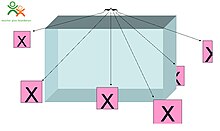

A Time Magazine article, CIVIL DEFENSE: Buzzers Mean Bombs in the November 14, 1960 issue is one of the only pieces of original documentation on the internet about the device and program. The article outlines a new program that supplements the then "basically unsound" warning system consisting of localized sirens and the Conelrad radio-alert system. The U.S. Army argued that in the age of intercontinental ballistic missiles a civil-defense warning system should be capable of warning 90% of the population within 30 seconds after a signal is given by the national civil-defense center in Colorado Springs.
The device is a buzzer installed into common outlets in homes, offices, factories and public buildings. The devices would be set off in an emergency by a specific voltage transmitted by the local power companies.
The indoor buzzers would be supplemented with outdoor loudspeakers scattered throughout every city. In case of attack, these loudspeakers would carry a warning signal, followed by instructions on what to do. [1]
"The present invention relates to electrical control circuits for producing a delayed action and controlled duration audible alarm, and more particularly to a receiving instrument preferably designed to be used in homes, offices and other buildings as a component of the National Emergency Alarm Repeater (NEAR) system and more particularly to such a receiver incorporating a solid state device for its major control function.
The task of providing a means of alerting the Nation of an impending enemy attack or other civil disaster has been given by Congress to the Office of Civil Defense. This office recognized early that som means had to be devised to supplement outdoor sirens in providing more effective warning since sirens often can not be heard indoors, and many suburban and rural areas are not within range of hearing of the nearest municipal siren system. After considerable research and investigation the conclusion was reached that it would be necessary to provide an indoor system which could be coordinated with outdoor warning systems already installed.
Such a system must reach the greatest possible number of homes and still not entail undue and prohibitive costs. Therefore it has been decided to use existing electrical power lines and to provide special generators to transmit an electrical signal of controlled frequency and duration over these lines in the event of a national emergency. The generators will b e used to superimpose a signal at a frequency of 270 cycles per second on the 60 cycles per second power which is normally transmitted over the power lines. A receiver uni, plugged into an ordinary A.C. wall receptacle, will respond with a loud buzzer-like sound when activated by an actuation signal of sufficient duration." [2]
